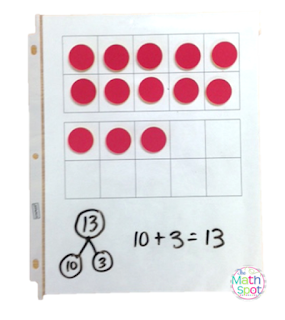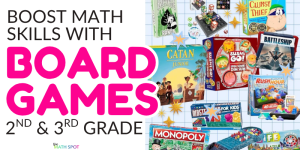This post contains affiliate links. This means that when you make a purchase, at no additional cost to you, I will earn a small commission.
You intuitively know which of your students has number sense and, even more evident, you know which students do not have number sense. But how can you develop your students’ number sense?
I used to be incredibly frustrated when it came to talking about developing number sense. I knew that some students had it, some students didn’t and that there were dozens of textbooks full of activities that promised to build number sense in my students.
And yet, I still didn’t have a good picture of what number sense WAS and WHY these activities were supposed to be building number sense in my students.

THIS POST CONTAINS AFFILIATE LINKS. THIS MEANS, THAT AT NO ADDITIONAL COST TO YOU, I WILL EARN A COMMISSION IF YOU CHOOSE TO MAKE A PURCHASE. I HAVE PERSONALLY USED THESE RESOURCES AND WOULD NOT RECOMMEND THEM IF I DID NOT APPRECIATE THE QUALITY OF THE RESOURCE PRIOR TO RECOMMENDATION.
I knew that number talks weren’t number sense… but they were supposed to help.
I knew that board games weren’t number sense… but somehow they helped to develop strength.
And I surely knew you couldn’t “teach” number sense…. but then what was I supposed to do?!?
Enter in John Van de Walle’s text “Teaching Student-Centered Mathematics”. If you have not picked up this text, I can not recommend it highly enough. I started with the pre-k -2 edition of the book and quickly picked up the 3-5 text as well. That’s saying a lot because these books are not necessarily inexpensive- but they are well worth every single penny.

Van de Walle breaks number sense down into 4 main number relationships and makes very clear what it means for a student to “have number sense”.
What Does It Mean to Have Number Sense?
Having number sense means having flexibility with numbers relative to:
- Knowing One More/One Less and Two More/Two Less
- Spatial Relationships
- Part/Part Whole Thinking
- Benchmarks of 5 and 10
When we understand that students who have flexibility using and understanding these four relationships have number sense we can then quickly and easily build opportunities to strengthen these relationships into the teaching you are already doing.
Let me say that again.
Building number sense does NOT need to be a separate part of your day, routines, teaching and instruction. You can develop number sense in your students through the instruction you are already preparing to deliver.
So let’s look at a few examples!
Building Number Sense With Teen Numbers
In this activity, students are composing and decomposing teen numbers.
By building teen numbers on a ten frame and pairing that representation with a number bond and equation we are supporting students in developing number sense around teen numbers as it involves 3 of the 4 number relationships that students with strong number sense are able to rely on.
Spatial Relationships- When the number 13 is laid out on a double ten frame, your students will become quick and effective at subitizing teen numbers by thinking about the relationship between the ten and ones. This conceptual subitizing reinforces number relationships.
Part/Part/Whole- Using a number bond to write about the ten and ones embedded in the number 13 supports your students in being able to flexibly be able to compose and decompose this number.
Benchmarks of 5 and 10- By building the number 13 on a double ten frame, students can readily see a thirteen as a ten and 3 more. The embedded ten is readily apparent in this model.
Building Number Sense with Decimal Numbers
In this example, students are playing a game called “1 or Bust” in which cards dictate whether students should add or subtract a tenth or a hundred. This game supports number sense around decimal numbers as it hits on all 4 number sense relationships.
Spatial Relationships – The growing (or shrinking!) decimal number is displayed on a place value template. Students will practice quickly recognizing the value of their number given these visual cues.
1 More/1 Less 2 More/2 Less- It is the nature of this game to practice one more and one less. The activity boosts number sense because students are asked to think about the number that would be produced if they have “one more tenth” or “one more hundredth” they will develop flexibility in place value thinking by practicing this relationship.
Part/Part/Whole – In naming the current value of their number, students will compose tenths and hundredths. This part/whole thinking reinforces that a number such as 0.63 is the same as 0.60 and 0.03 (almost like thinking of numbers in expanded form) . This type of understanding leads to flexibility in our students as they deal with decimal operations in the future.
Benchmarks of 5 and 10- In this activity, students are able to compose ten hundredths to create a new tenth. Students will also recognize that 9 hundredths, for example, is only one hundredth less than 1 tenth.
The next time you see an activity that promises to “build number sense” stop and consider how the activity might support one or more of the four number relationships that are true markers of number sense. Or, better yet, in your instruction, look for opportunities to highlight these relationships for your students.
Related Resources:








